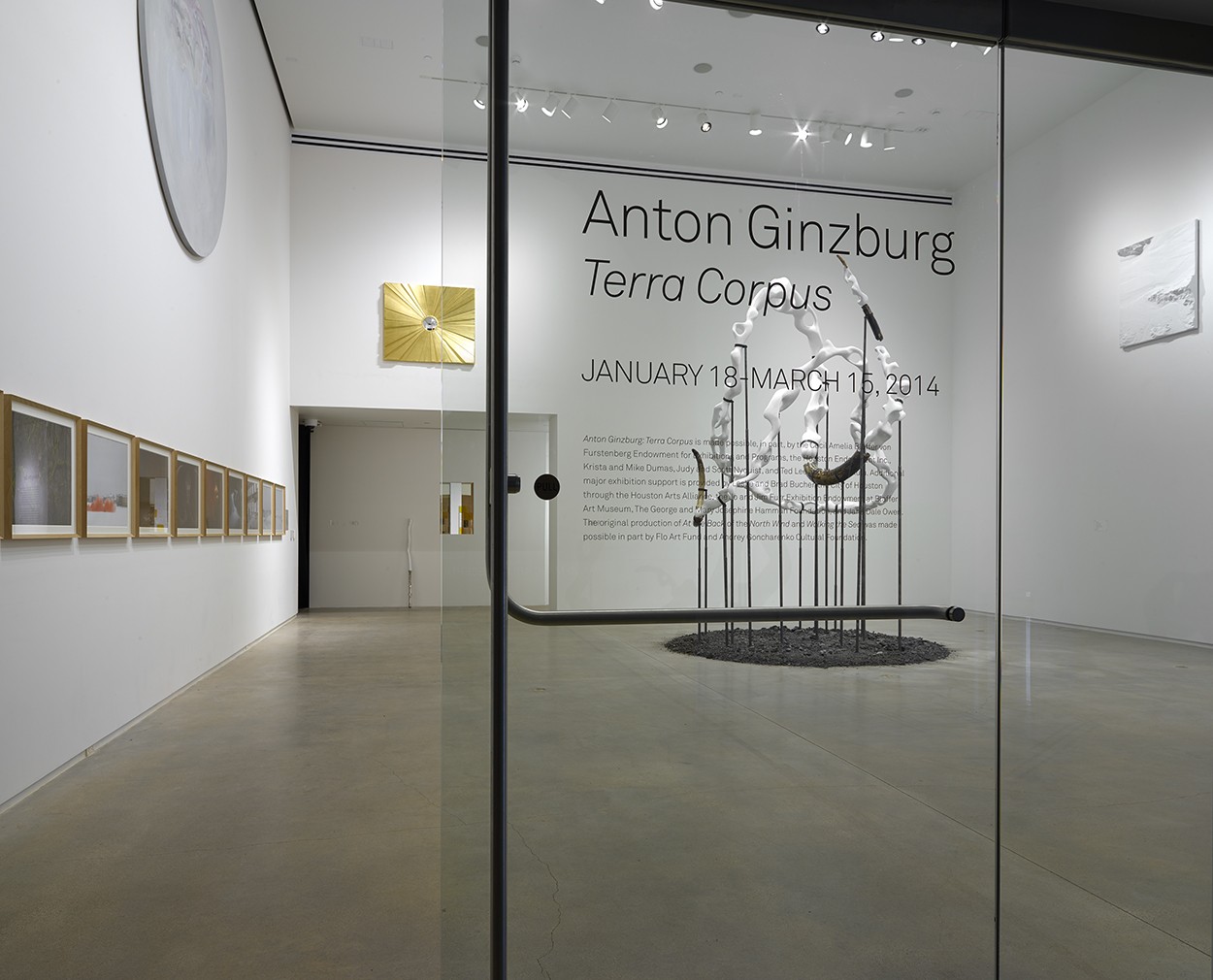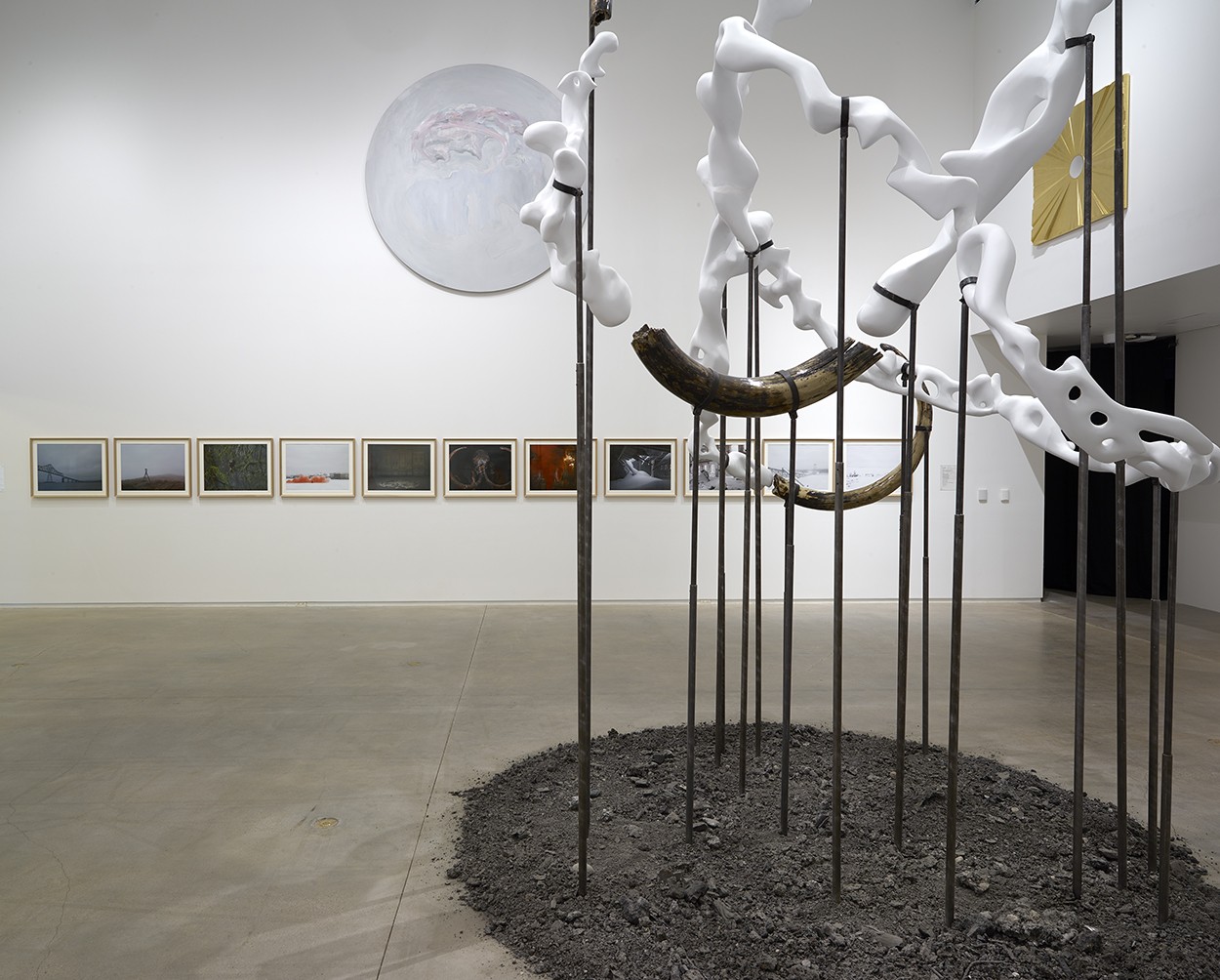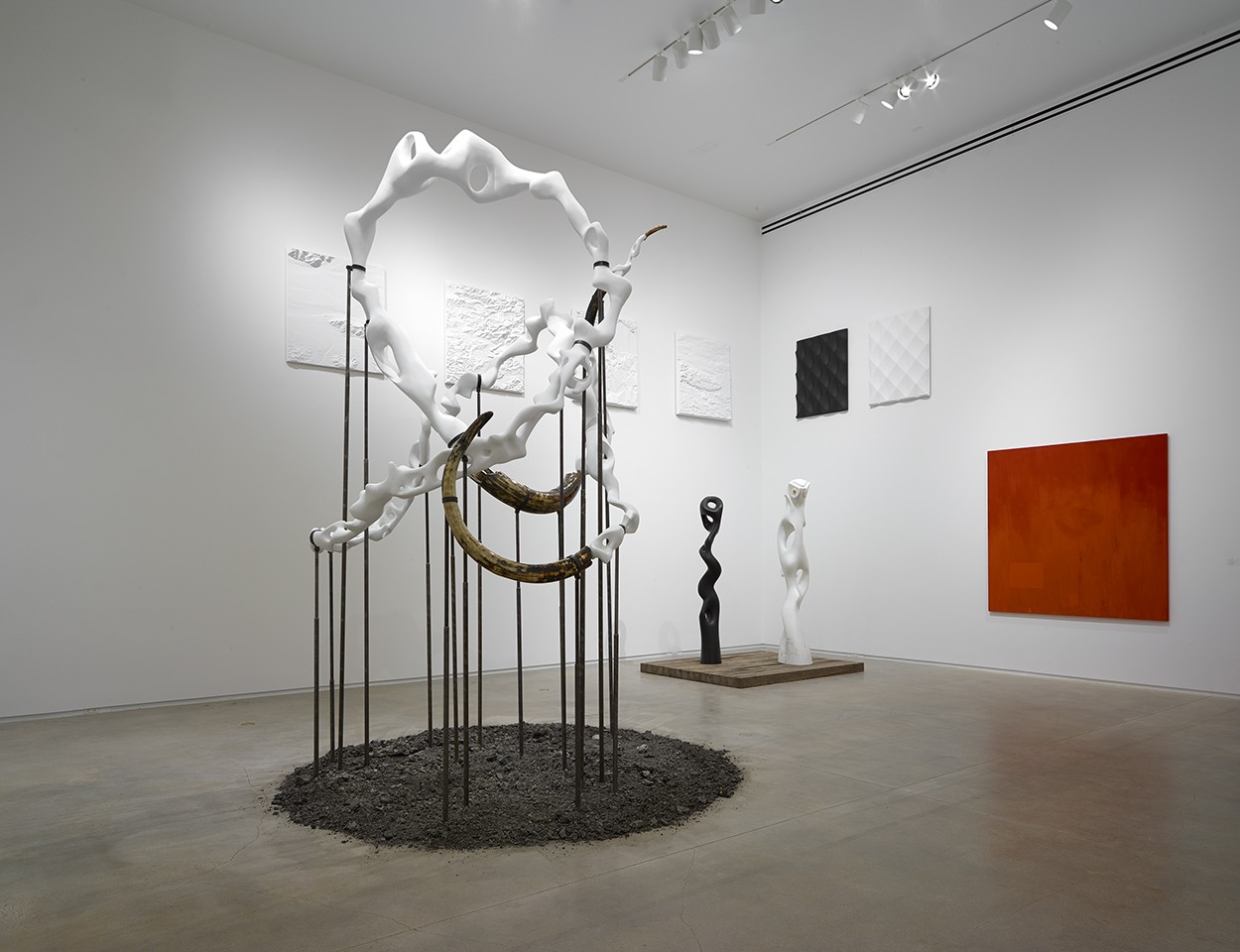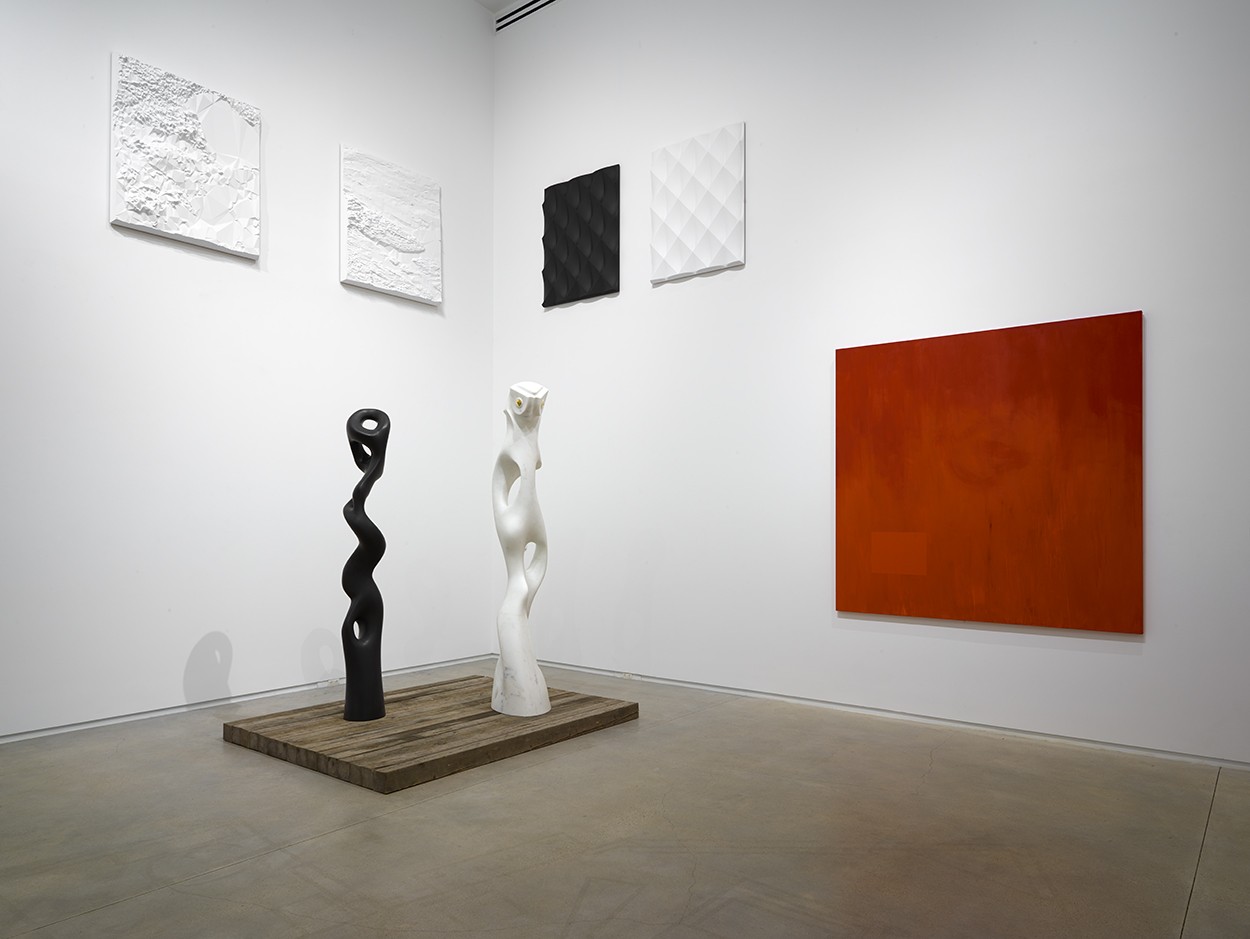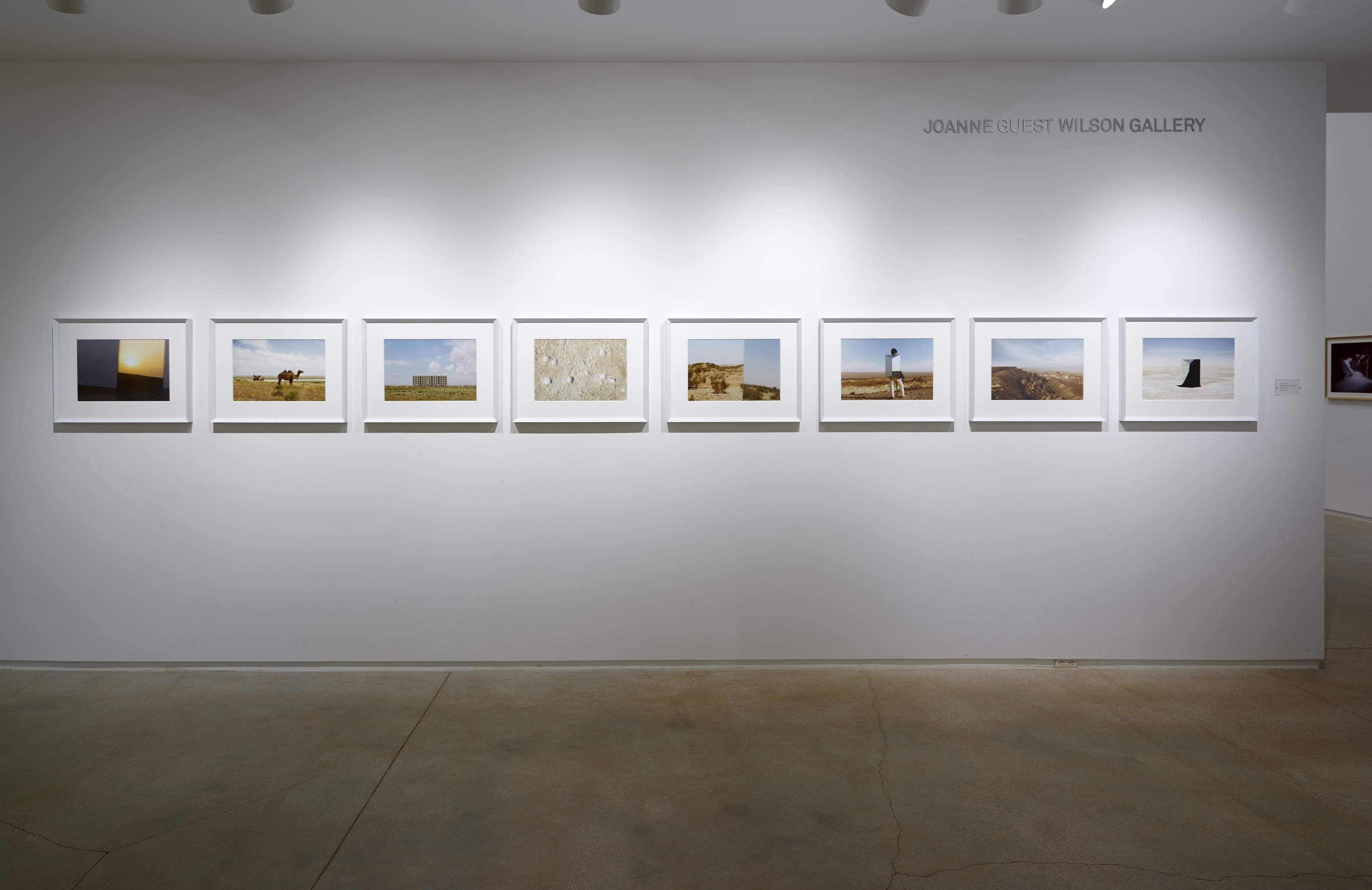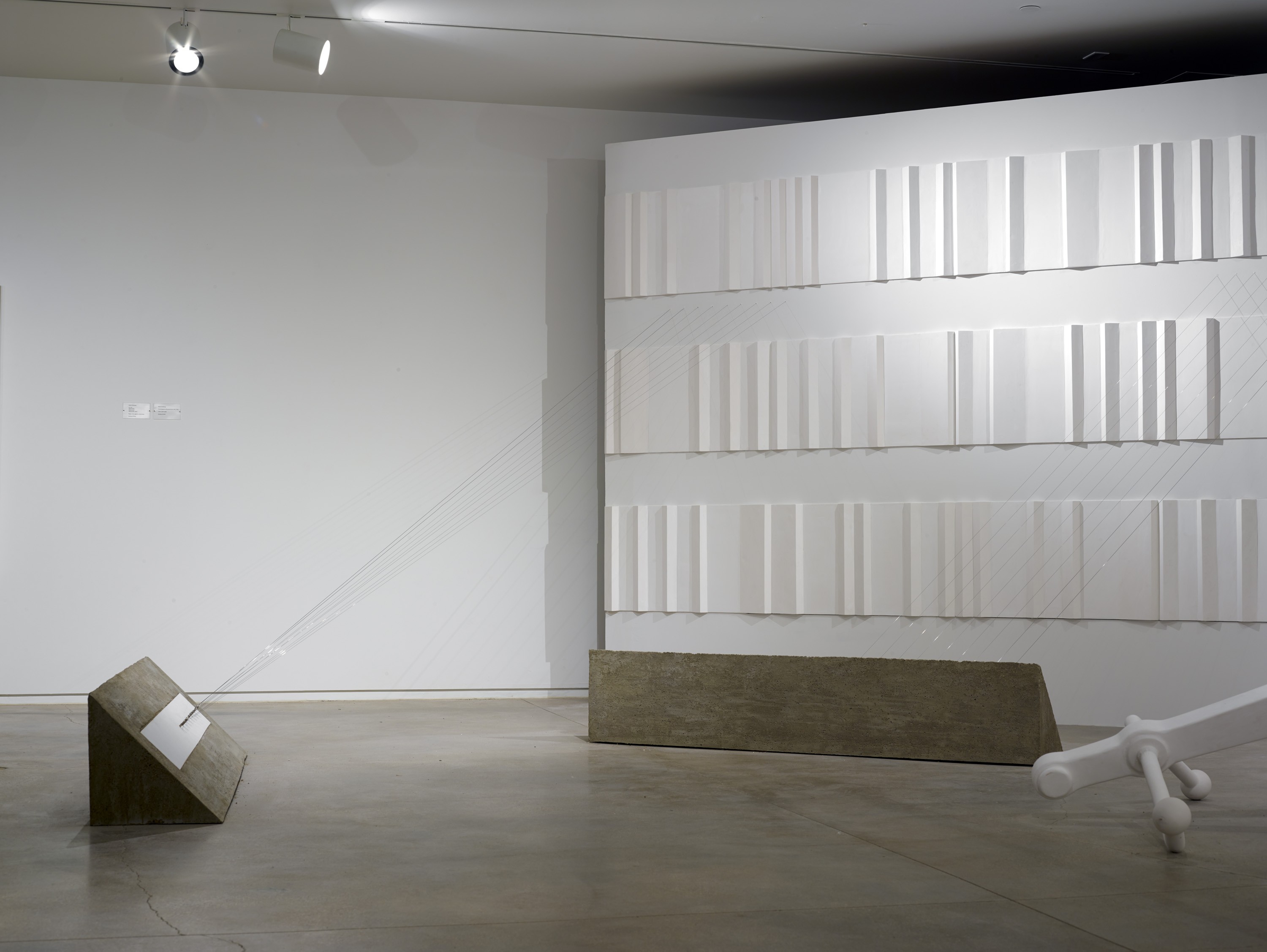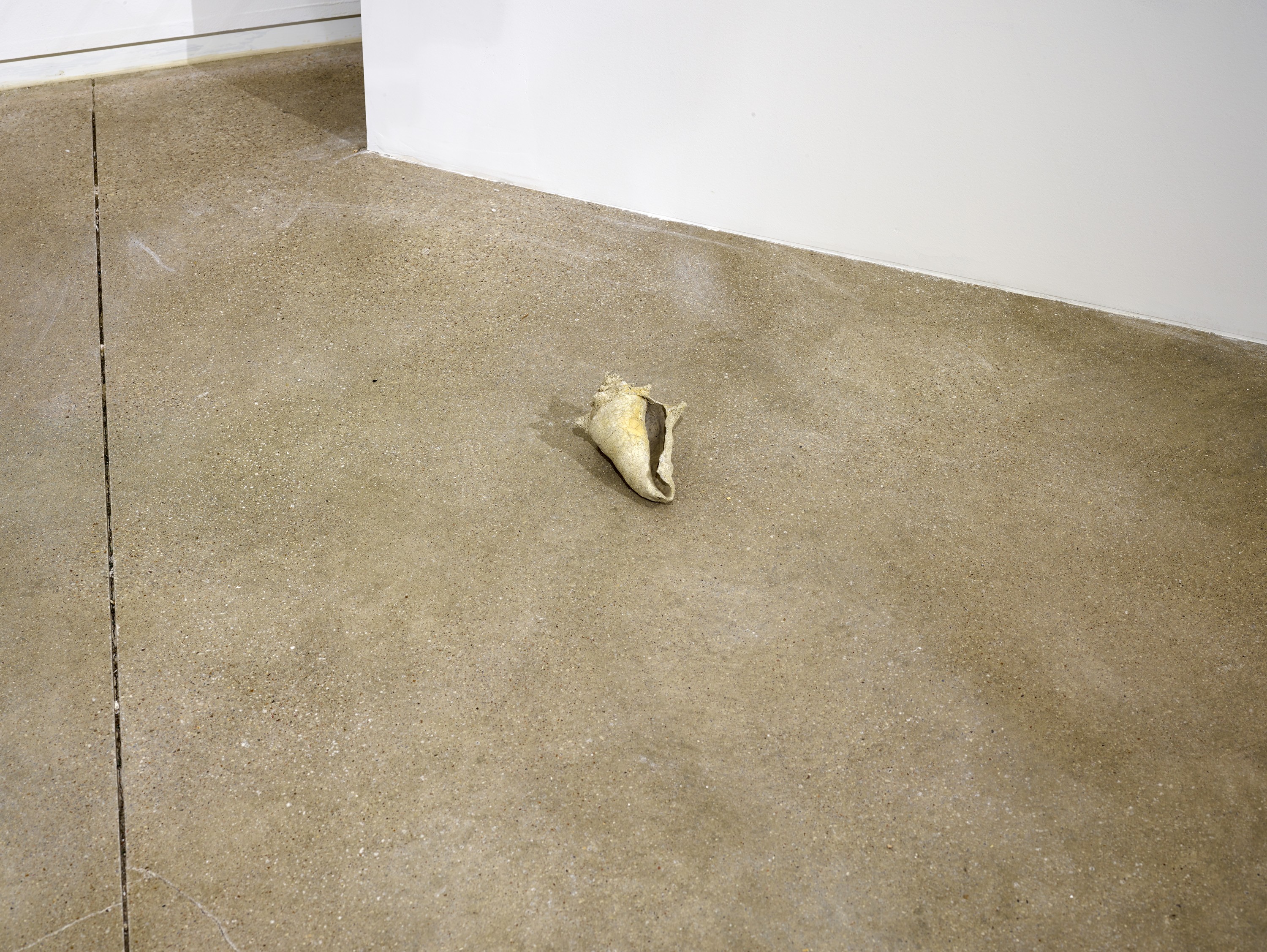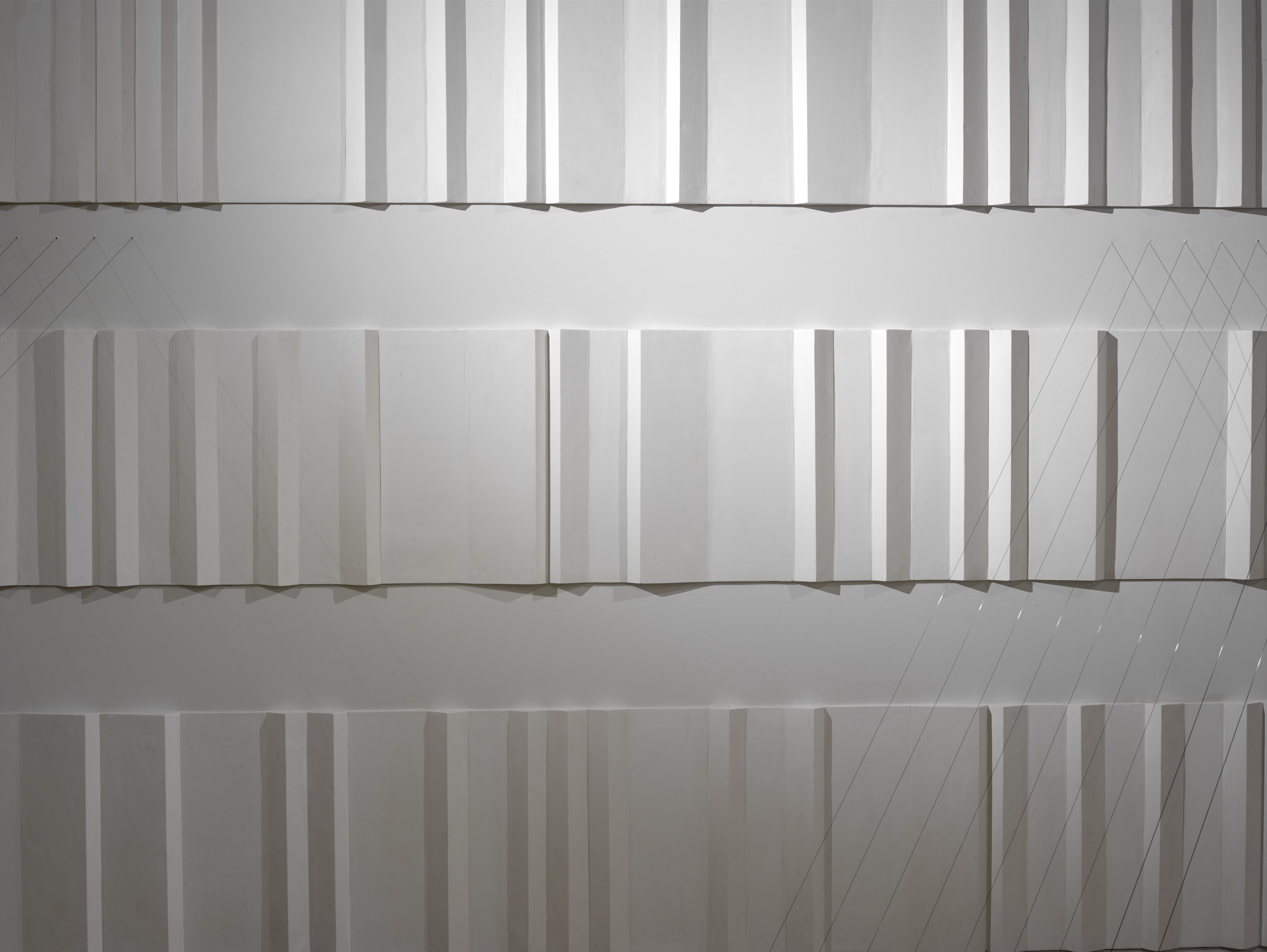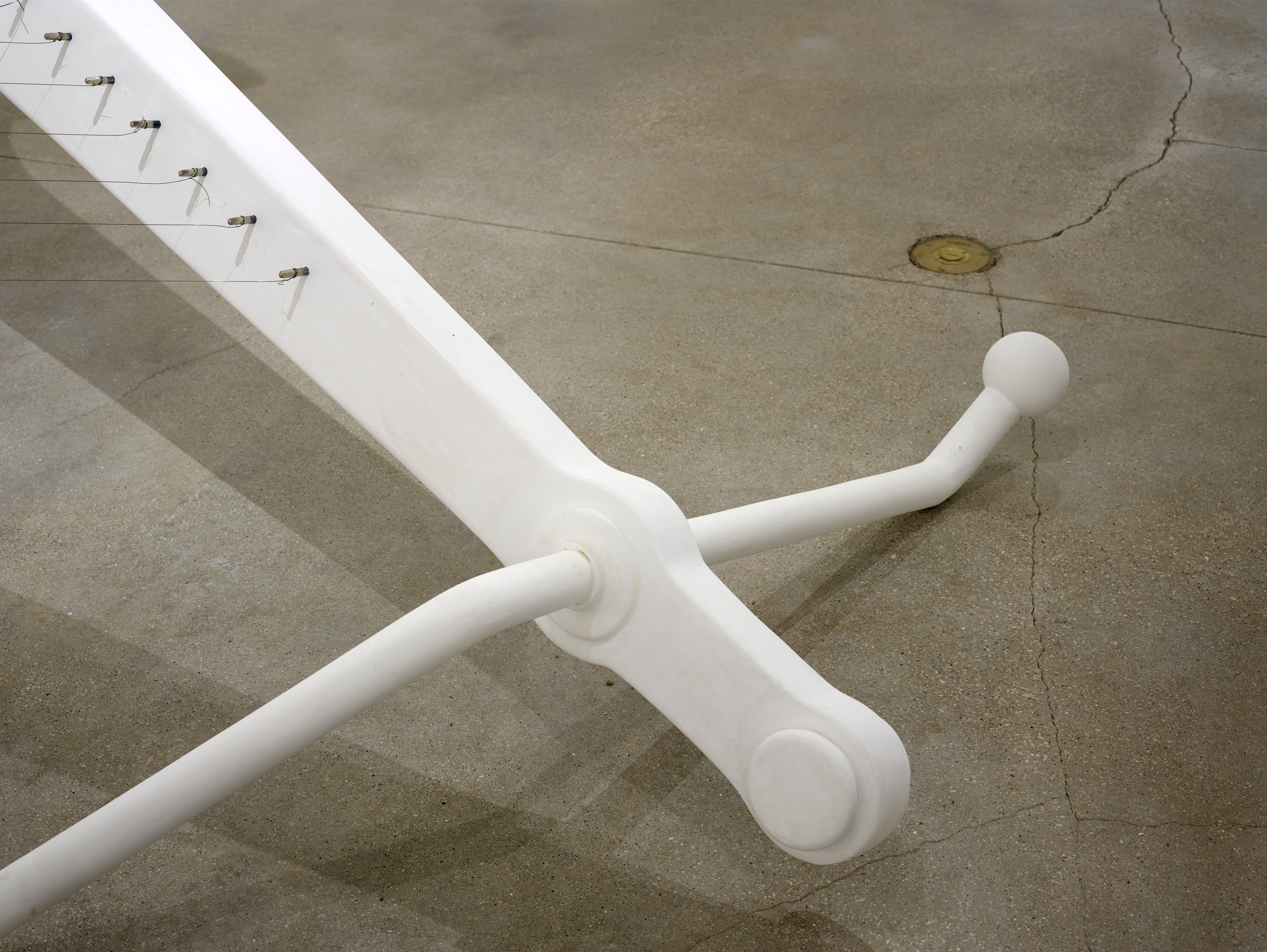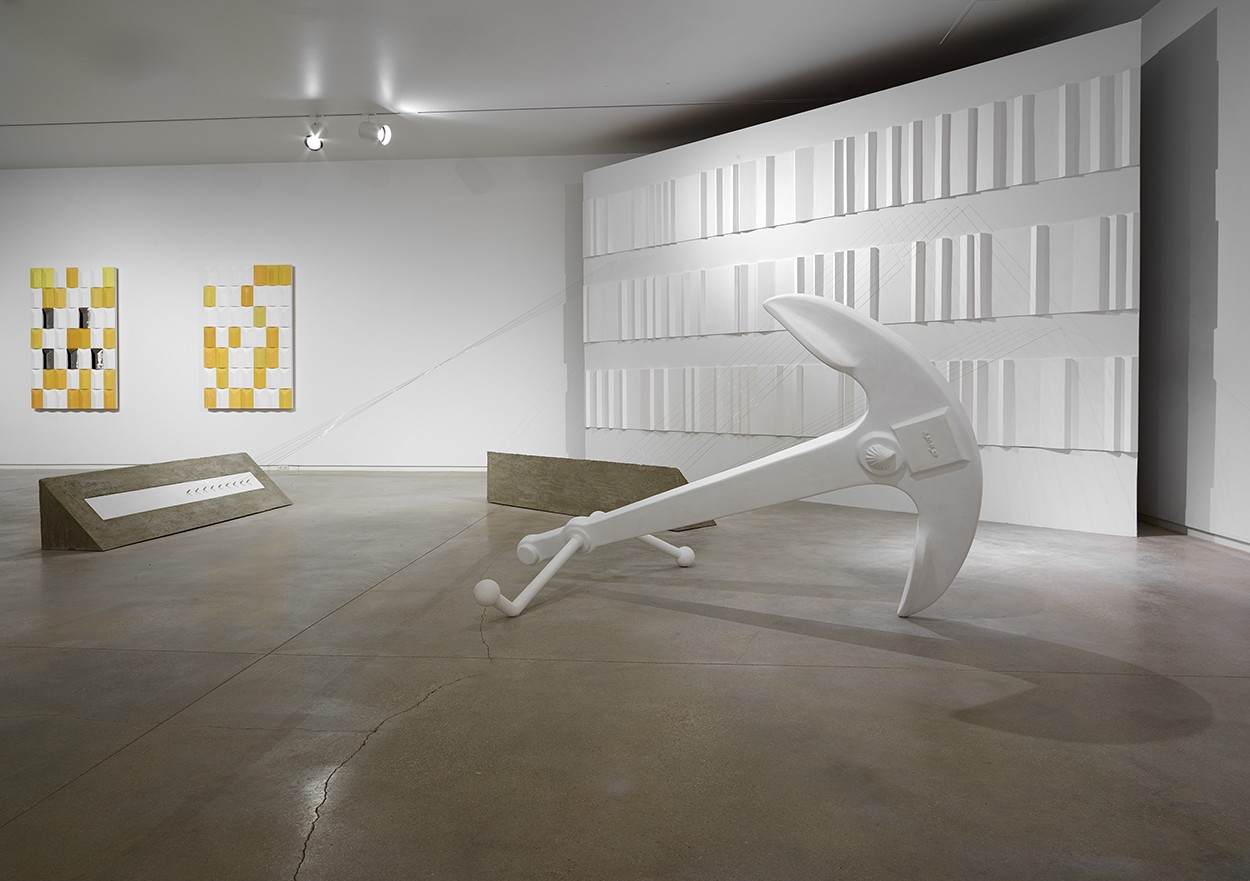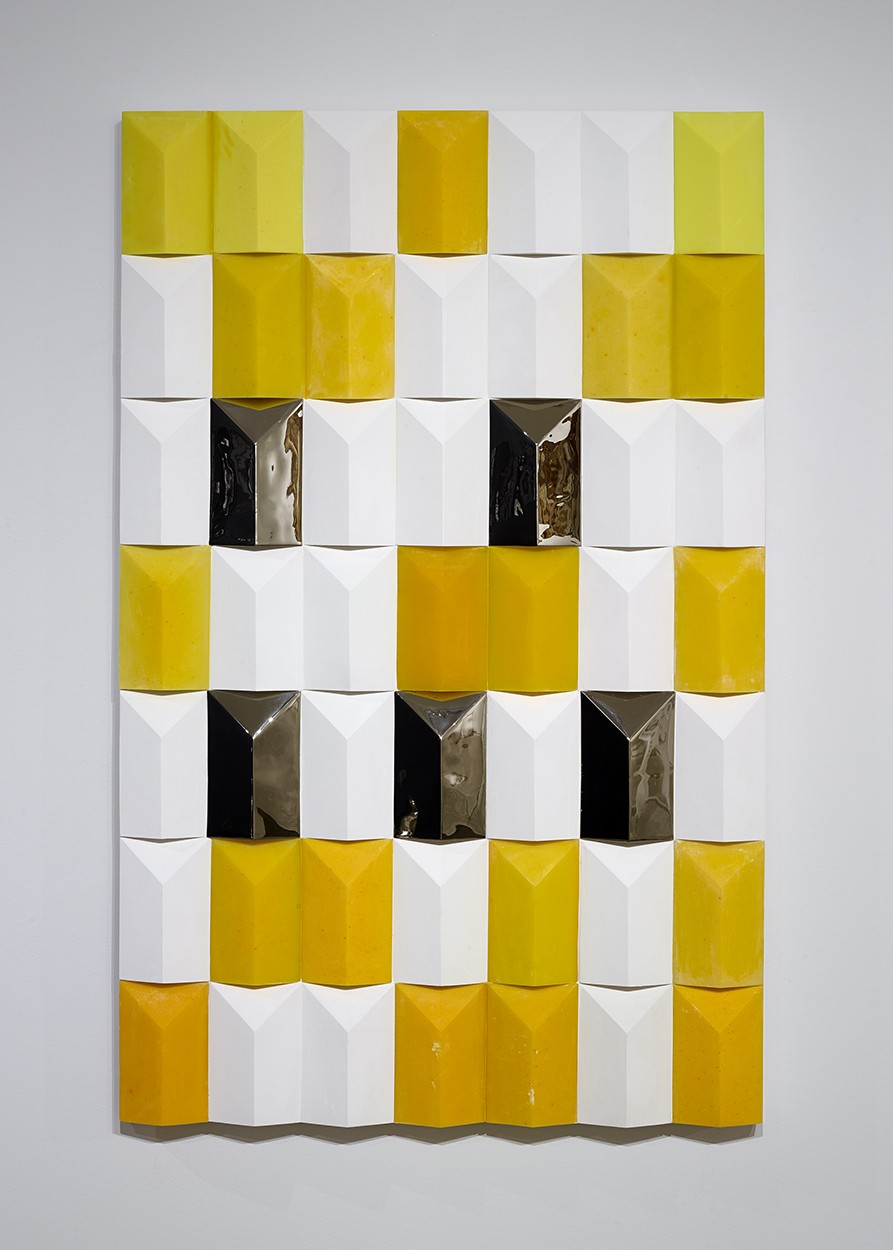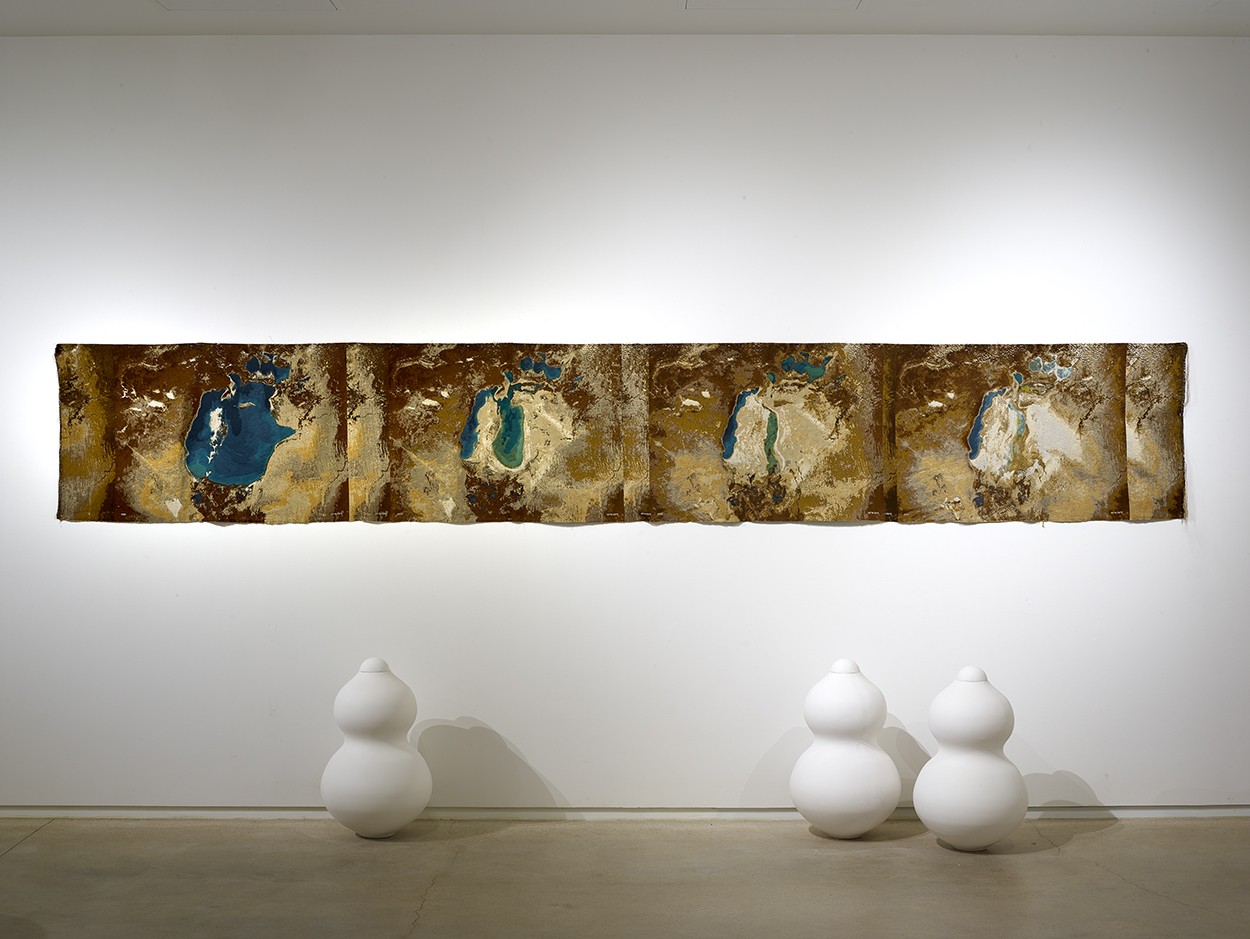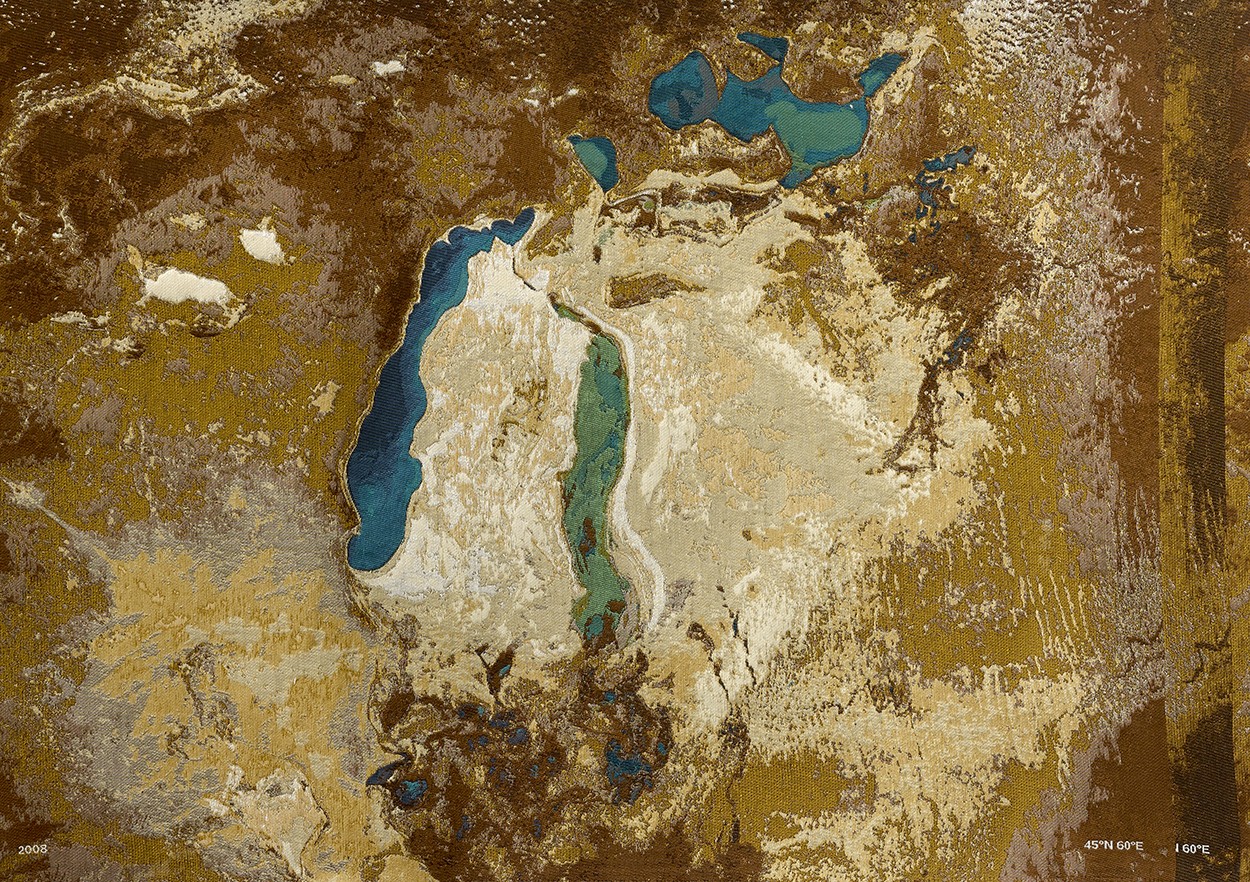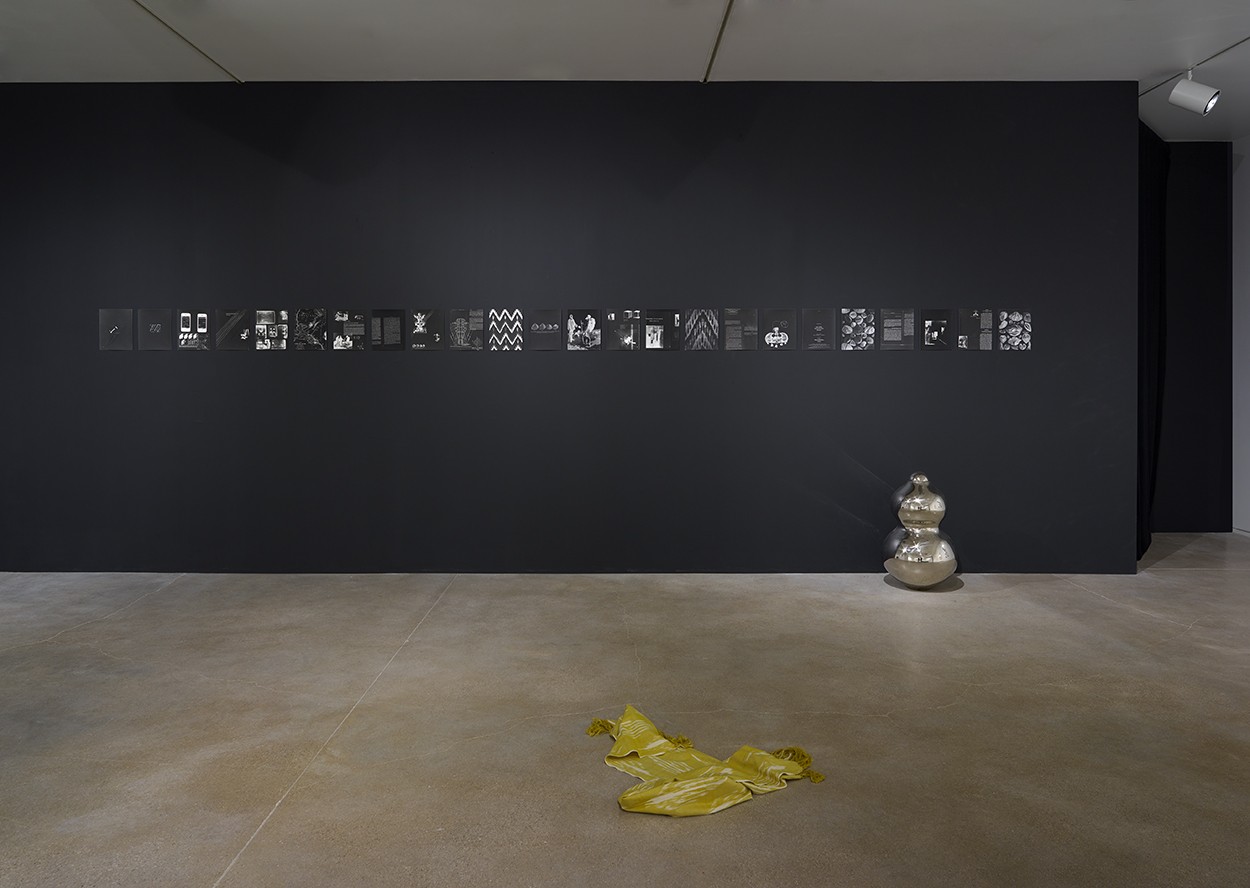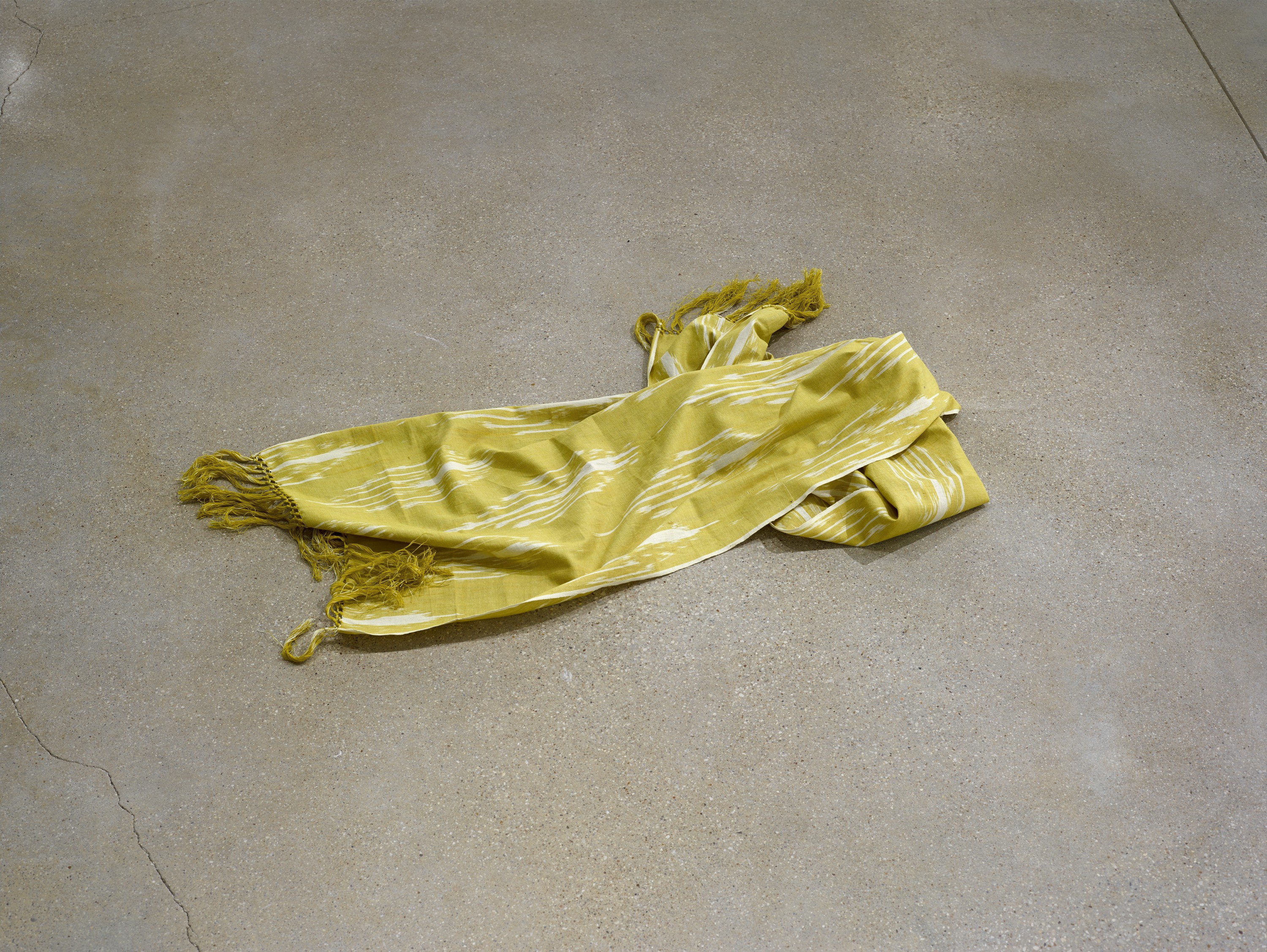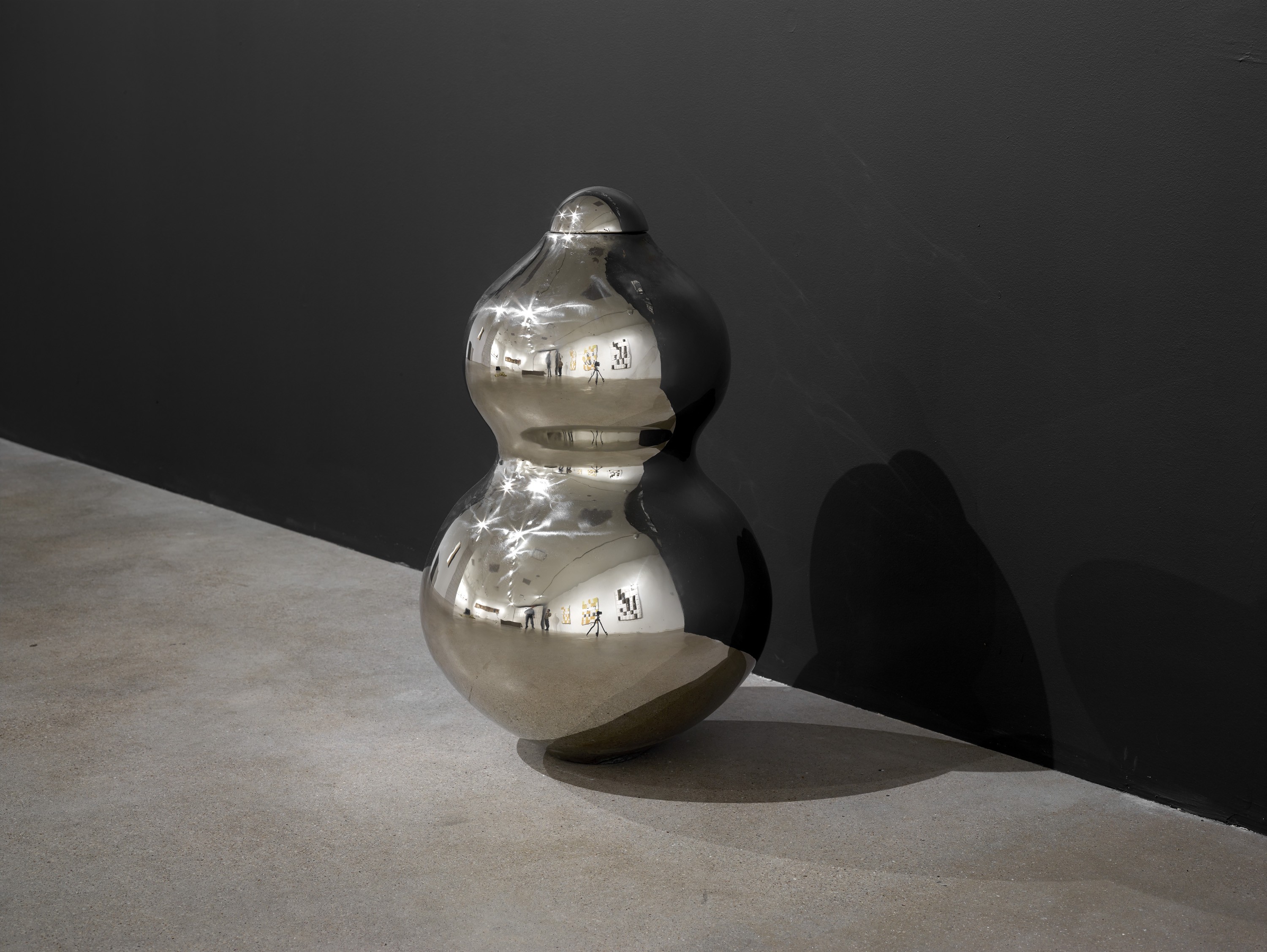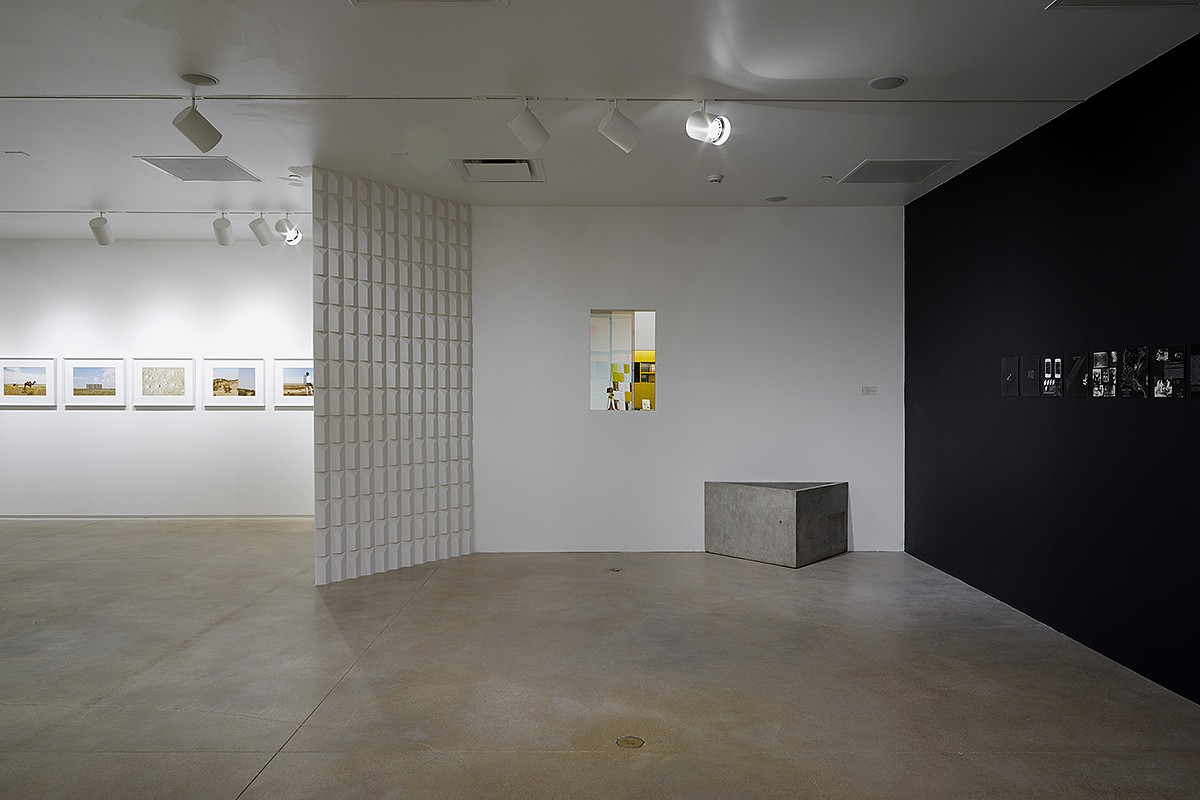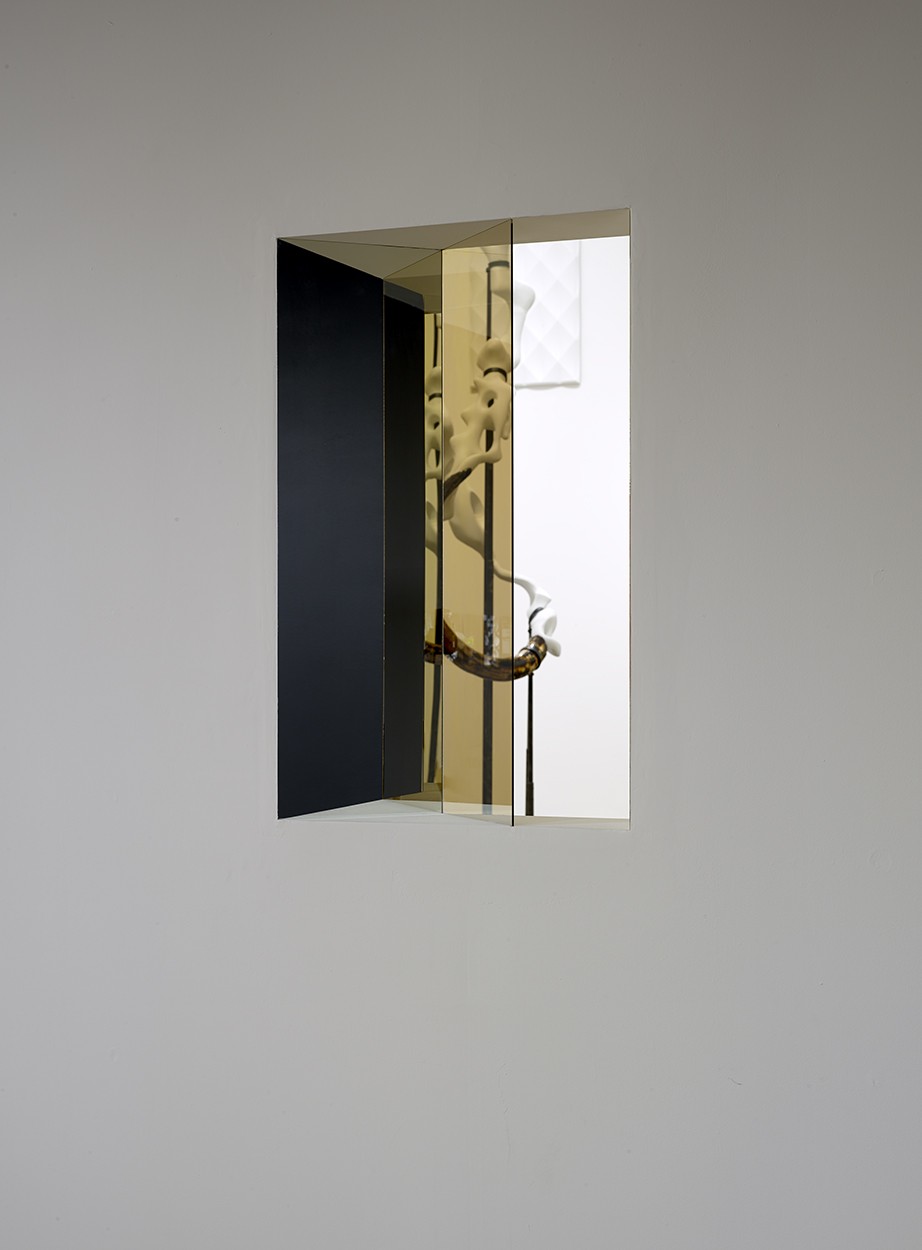Terra Corpus (two parts: Walking the Sea and Hyperborea)
at the Blaffer Art Museum at the University of Houston, Houston, Texas / January 18, 2014 - March 15, 2014
In Walking the Sea Ginzburg turns his attention to the Aral Sea, a 26,000 square mile area between Kazakhstan and Uzbekistan. Previously one of the four largest inland bodies of water in the world, the Aral Sea has been steadily shrinking since the 1960s. Caused by the Soviet irrigation project which diverted feeder-rivers to irrigate cotton fields in the surrounding desert in an attempt to fuel a new local economy, this measure eventually led to the destruction of the region’s once prosperous fishing industry, unemployment and local climate change. By now almost dried up, the Aral Sea has become an environmental ruin of the Soviet era.
Looking toward American Land Art of the late 1960's and early
1970's, Ginzburg describes the Aral Sea as a ready-made earthwork.
In Walking the Sea he makes visible a territory that remains largely
inaccessible and undocumented while revealing the paradox of a
sea without water. The film follows Ginzburg as he traverses the
landscape on foot. Walking from sunrise to sunset, he carries on his
back a three-part mirror which creates a reverse perspective on
the landscape he leaves behind, both reflecting and distorting it as
he moves through the exposed seabed, with its abandoned Soviet
military bases, scattered rusting vessels, and the occasional animals.
The photographs, objects and reliefs associated with Walking the Sea
introduce references to regional histories and cultural myths ranging
from the belief in the existence of a subterranean “inner sea,” to
which the Aral Sea has disappeared and from which is has
reemerged several times throughout history, to the invocation of the
wanderer in the figure of the traveling dervishes and the musical
qualities of the land in the form of an Aeolian harp.
Whether embarking on the quest for the imaginary but legendary
Hyperborea or the missing Aral Sea, Ginzburg draws on collective
memories and historical and cultural markers to construct lines
of inquiry into the past and trace them to points of intersection
in the present.

